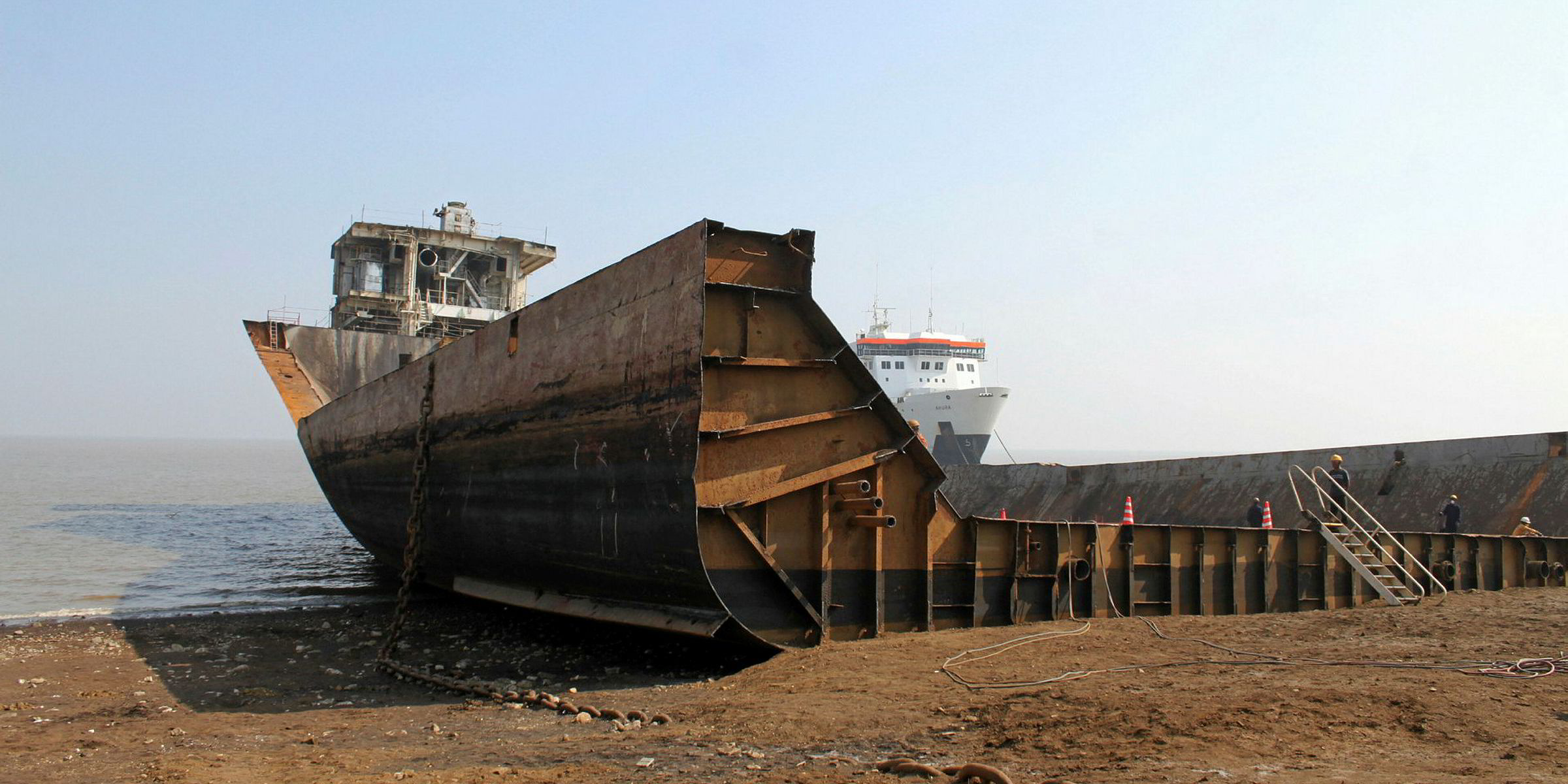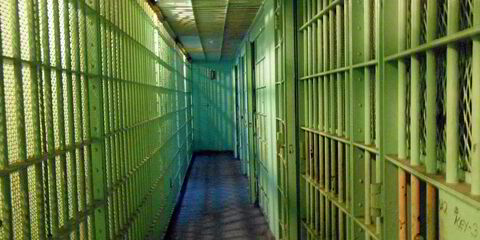A leading figure in progressing the European Union’s Ship Recycling Regulation (SRR) has raised concerns over shortfalls in the applications of some Indian yards hoping to be approved to recycle European-flag ships.
Emilien Gasc, a waste management policy officer at the European Commission, said he had seen the “good, bad and ugly” in applications from 11 breaking yards in India, seven facilities in Turkey, four Chinese complexes and two recyclers in the US.
Speaking at last week's TradeWinds Ship Recycling Forum in Hamburg about the positive aspects of Indian yard applications, Gasc said they had shown a better understanding of the Hong Kong International Convention for the Safe and Environmentally Sound Recycling of Ships, on which the EU's SRR is based. He said there had been considerable improvement in the secondary cutting zone, where hull blocks are dismantled on an impermeable floor.
Gasc also said there had been developments in hazardous waste management.
“There is a lot of good to be said of the applications,” he said.
However, turning to the less positive aspects, he said some Indian yards had demonstrated an unwillingness to ensure subcontractors apply the right standards, suggesting a “lack of understanding of their relationship with subcontractors”.
Gasc said there was still a problem with the primary cutting zone, where ships are initially dismantled in the environmentally sensitive intertidal zone.
He insisted the applications demonstrated a “vagueness about what happens in the primary cutting zone”, adding that he needed the applications to be “more specific” about what was happening in the intertidal zone. He said he needed to see yards “improve the baseline approach to drop blocks into the sea”.

However, one Indian yard — Shree Ram Group — provided video evidence that it had successfully completed the dismantling of a ship in the primary cutting zone without impacting the intertidal zone by using a combination of cranes and crane barges.
Capacity risk
Nitin Kanakiya, secretary of Ship Recycling Industries Association India, said India’s improved yards were dismantling ships without dropping blocks into the intertidal zone.
Gasc said the worst of the applications had shown a “lacklustre” approach to medical facilities such as ambulances and hospitals. He added that he had seen further evidence of “faked documentation”, although he said he was cautious not to overstate the extent of the problem.
However, Keiji Tomoda, chairman of the ship recycling committee at the Japanese Shipowners' Association, warned that the EU was running the risk of falling short on securing sufficient capacity to demolish European-flag ships if it did not approve Indian yards.
“It is apparent the existing capacity in Europe is not enough," he said. "The speed-up in improvement of Indian yards is remarkable. We want the EU to have a flexible approach to consider non-European yards.”
The EU's SRR will enter into force at the end of this year and there are questions over whether the European Commission can complete its auditing of yards before that date.
Gasc said the initial step was to reply to applicants by sending them a desk assessment and asking if they would like to continue.
He explained that the European Commission had the capability to send surveyors to conduct an on-site assessment within weeks.
However, he admitted that winning the approval of one jurisdiction to allow European surveyors to carry out on-site inspections had emerged as a stumbling block.
The country involved is understood to be China, which is expected to be key to the EU’s hopes of securing enough capacity to demolish the European-flag fleet.
However, Gasc added that talks were under way that he hoped would resolve the situation.
Reacting to criticism that Europe faces a massive shortfall in approved shipbreaking capacity, Gasc said Brussels is currently attempting to assess the required capacity. However, he said the issue is more complicated than is being suggested.
“The terms of the debate are not properly set,” he argued.



